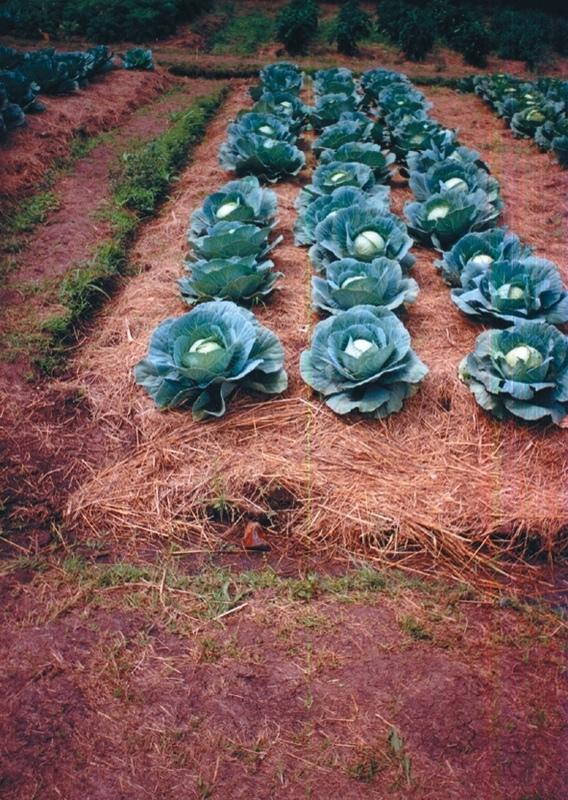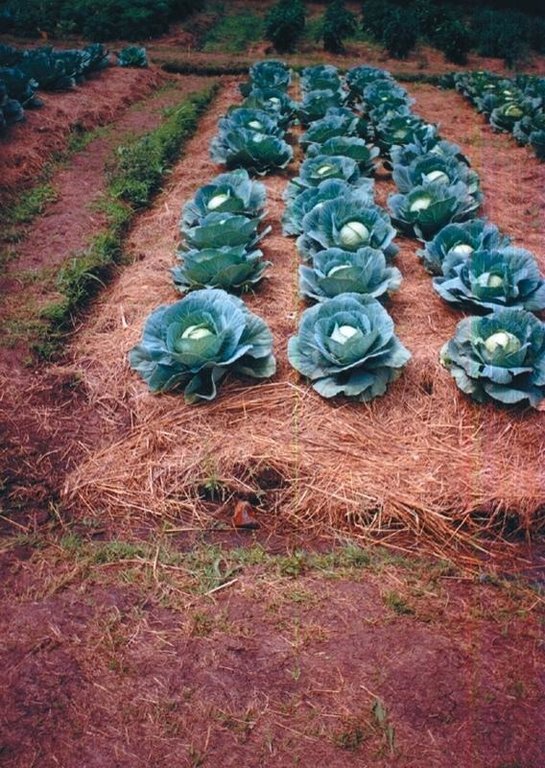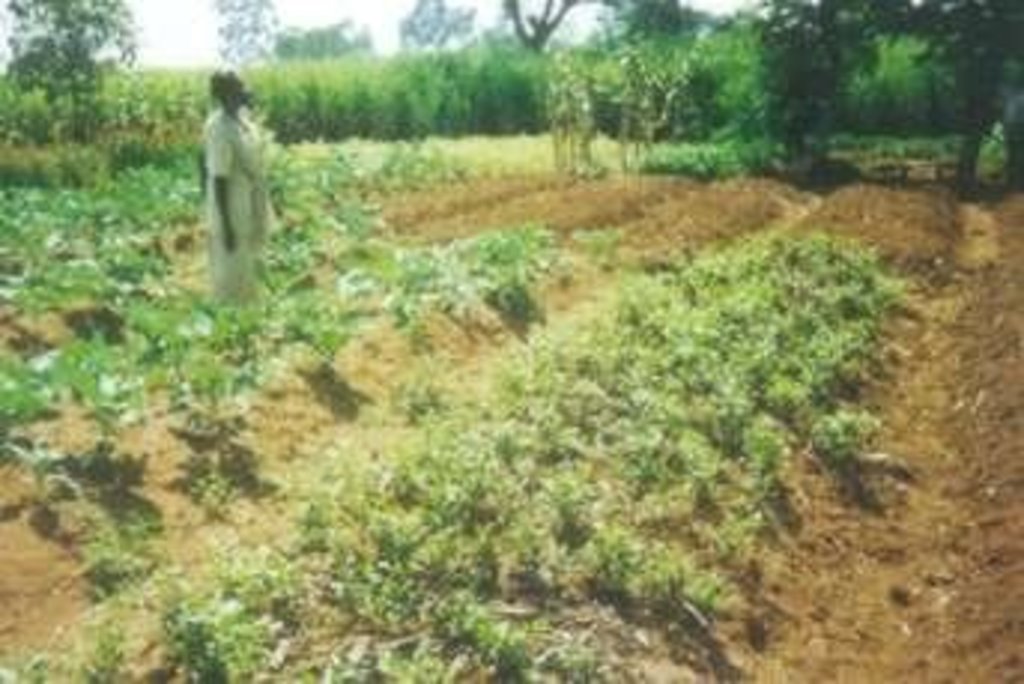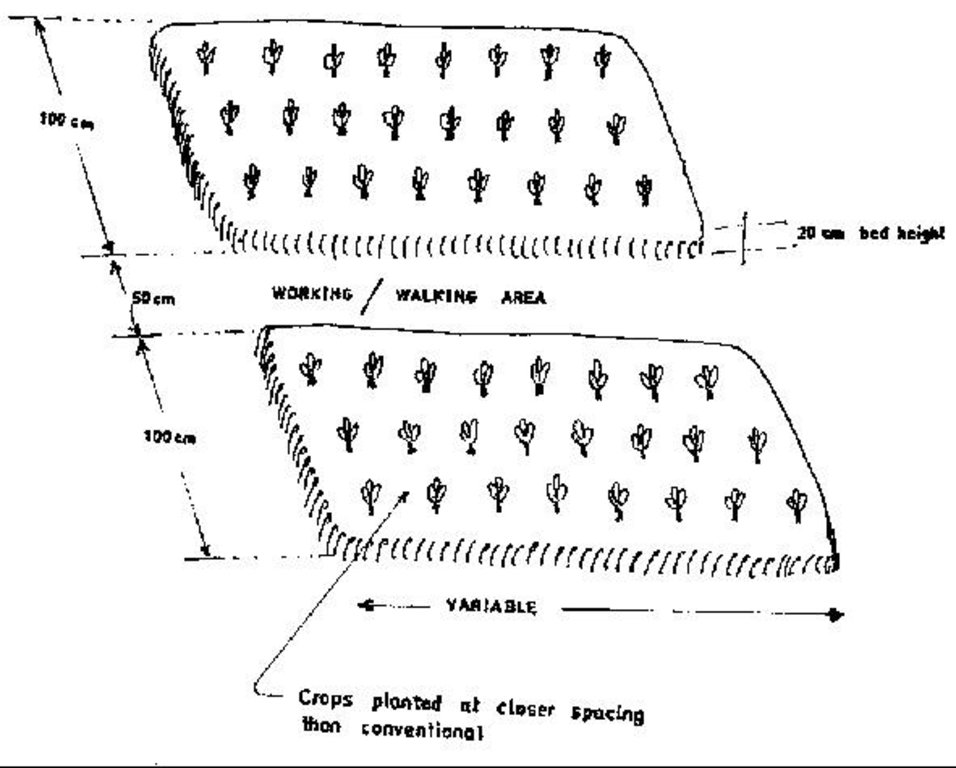double dug beds - Busia experience [Kenya]
- Creation:
- Update:
- Compiler: Unknown User
- Editor: –
- Reviewer: David Streiff
technologies_1095 - Kenya
View sections
Expand all Collapse all1. General information
1.3 Conditions regarding the use of data documented through WOCAT
When were the data compiled (in the field)?
05/07/1999
The compiler and key resource person(s) accept the conditions regarding the use of data documented through WOCAT:
Ja
2. Description of the SLM Technology
2.1 Short description of the Technology
Definition of the Technology:
Digging of planting beds to increase soil depth for higher moisture retention in the rootzone.
2.2 Detailed description of the Technology
Description:
Description: Excavating the planting bed to remove the infertile sub-soil and separate the top soil. The top soi is later mixed with farm yard manure and returned into the excauated are to form the planting bed. Purpose: Improvement of water retention and root zone storage through increased depth of soil. Helps to increase the yields of crops. Maintenance: Involves repairing the shoulders of the raised beds and addition of organic manures to improve fertility. Environment: Suitable for vegetable gardens around the dweling areas but can be adopted for field crops with high value. Areas with rock outcrops and shallow underlying rocks are not suitable due to limited depth.
2.3 Photos of the Technology
2.5 Country/ region/ locations where the Technology has been applied and which are covered by this assessment
Country:
Kenya
Region/ State/ Province:
Western/ Busia
Map
×2.6 Date of implementation
If precise year is not known, indicate approximate date:
- less than 10 years ago (recently)
2.7 Introduction of the Technology
Specify how the Technology was introduced:
- through projects/ external interventions
Comments (type of project, etc.):
Kenya Institute of Organic Farming - Kabete, Nairobi
3. Classification of the SLM Technology
3.1 Main purpose(s) of the Technology
- improve production
3.2 Current land use type(s) where the Technology is applied

Cropland
- Annual cropping
Comments:
Major land use problems (compiler’s opinion): - Poor soil fertility, Shallow soil depth limiting penetration, Striga weed problem.
Major land use problems (land users’ perception): Poor soil moisture availability - Unavailability of production inputs.
Type of cropping system and major crops comments: Shifting cultivation: major food crop = maize, cotton
fallow cultivation: major food crop = maize / cassava
continuous cropping: major cash crop = cotton, major food crop = sorghum, other = maize / cassava
ley farming: major cash crop = sugarcane
3.3 Further information about land use
Water supply for the land on which the Technology is applied:
- rainfed
Comments:
Water supply: Also full irrigation
Number of growing seasons per year:
- 2
Specify:
Longest growing period in days: 120 Longest growing period from month to month: Mar - JulSecond longest growing period in days: 90 Second longest growing period from month to month: Sep - Nov
3.4 SLM group to which the Technology belongs
- improved ground/ vegetation cover
- minimal soil disturbance
3.5 Spread of the Technology
Comments:
Total area covered by the SLM Technology is 1.5 m2.
the technology is being practiced in the district. The practice is spatially scattered within the divisions where other technologies are also being practiced.
3.6 SLM measures comprising the Technology

agronomic measures
- A2: Organic matter/ soil fertility
Comments:
Main measures: agronomic measures
Type of agronomic measures: deep tillage / double digging
3.7 Main types of land degradation addressed by the Technology

chemical soil deterioration
- Cn: fertility decline and reduced organic matter content (not caused by erosion)

water degradation
- Ha: aridification
Comments:
Main type of degradation addressed: Cn: fertility decline and reduced organic matter content, Ha: aridification
Main causes of degradation: other natural causes (avalanches, volcanic eruptions, mud flows, highly susceptible natural resources, extreme topography, etc.) specify (soils with poor moisture retention leading to erratic cropping pattern), education, access to knowledge and support services (Lack of knowledge)
Secondary causes of degradation: poverty / wealth (Lack of captial - quite a high number of people are poor.)
3.8 Prevention, reduction, or restoration of land degradation
Specify the goal of the Technology with regard to land degradation:
- reduce land degradation
4. Technical specifications, implementation activities, inputs, and costs
4.1 Technical drawing of the Technology
4.2 Technical specifications/ explanations of technical drawing
Technical knowledge required for field staff / advisors: low
Technical knowledge required for land users: low
Main technical functions: increase in organic matter, increase of infiltration, increase / maintain water stored in soil, improvement of soil structure
Secondary technical functions: control of concentrated runoff: retain / trap
Deep tillage / double digging
Remarks: The bed width need to be narrowto allow ease of operations by attendant
4.3 General information regarding the calculation of inputs and costs
other/ national currency (specify):
Kenya shilling
Indicate exchange rate from USD to local currency (if relevant): 1 USD =:
65.0
Indicate average wage cost of hired labour per day:
0.80
4.4 Establishment activities
| Activity | Type of measure | Timing | |
|---|---|---|---|
| 1. | layout of seedbeds | Structural | |
| 2. | Excavation to remove the top soil | Structural | Dry season |
| 3. | Excavation to remove the subsoil | Structural | Dry season |
| 4. | mixing top soil with manure | Structural | Dry season |
| 5. | returning the mixture to the excavated bed | Structural | Dry season |
4.6 Maintenance/ recurrent activities
| Activity | Type of measure | Timing/ frequency | |
|---|---|---|---|
| 1. | .Layout of planting beds | Agronomic | Dry season / Whenever necessary |
| 2. | Excavation to remove top soil | Agronomic | Dry season / |
| 3. | Excavation to remove subsoil | Agronomic | Dry season / once for all |
| 4. | Mixing top soil with manure | Agronomic | Dry season / As necessary |
| 5. | returning the mixture to the excavated bed | Agronomic | Dry season / once for all |
| 6. | repairing raised edges of tillage beds | Structural | dry season/every season |
| 7. | digging in manure | Structural | dry season/on demand |
| 8. | mulch application | Structural | all year/during cropping |
4.7 Costs and inputs needed for maintenance/ recurrent activities (per year)
Comments:
area of land affected by the technology (beds)
4.8 Most important factors affecting the costs
Describe the most determinate factors affecting the costs:
Labour is the most important and is abudant, at a cost of KES 50 or U$ 0.8 per man day. Opportunities of group work can be employed to reduce total cost of technology establishment.
5. Natural and human environment
5.1 Climate
Annual rainfall
- < 250 mm
- 251-500 mm
- 501-750 mm
- 751-1,000 mm
- 1,001-1,500 mm
- 1,501-2,000 mm
- 2,001-3,000 mm
- 3,001-4,000 mm
- > 4,000 mm
Specifications/ comments on rainfall:
Annual rainfall: Also 1,501-2,000 mm
Agro-climatic zone
- sub-humid
5.2 Topography
Slopes on average:
- flat (0-2%)
- gentle (3-5%)
- moderate (6-10%)
- rolling (11-15%)
- hilly (16-30%)
- steep (31-60%)
- very steep (>60%)
Landforms:
- plateau/plains
- ridges
- mountain slopes
- hill slopes
- footslopes
- valley floors
Altitudinal zone:
- 0-100 m a.s.l.
- 101-500 m a.s.l.
- 501-1,000 m a.s.l.
- 1,001-1,500 m a.s.l.
- 1,501-2,000 m a.s.l.
- 2,001-2,500 m a.s.l.
- 2,501-3,000 m a.s.l.
- 3,001-4,000 m a.s.l.
- > 4,000 m a.s.l.
Comments and further specifications on topography:
Slopes on average: gentle
5.3 Soils
Soil depth on average:
- very shallow (0-20 cm)
- shallow (21-50 cm)
- moderately deep (51-80 cm)
- deep (81-120 cm)
- very deep (> 120 cm)
Soil texture (topsoil):
- coarse/ light (sandy)
Topsoil organic matter:
- medium (1-3%)
- low (<1%)
If available, attach full soil description or specify the available information, e.g. soil type, soil PH/ acidity, Cation Exchange Capacity, nitrogen, salinity etc.
Soil texture: sandy, clay, loam
Soil fertility is low - medium
Soil drainage / infiltration is medium - good
Soil water storage capacity is low - medium
5.6 Characteristics of land users applying the Technology
Off-farm income:
- > 50% of all income
Relative level of wealth:
- poor
- average
Level of mechanization:
- manual work
- animal traction
Indicate other relevant characteristics of the land users:
Population density: > 500 persons/km2
Annual population growth: 3% - 4%
5% of the land users are rich and own 5% of the land (dwell in towns).
35% of the land users are average wealthy and own 40% of the land (rely on land /off farm employment).
60% of the land users are poor and own 55% of the land (have no other form of income except land).
Off-farm income specification: due to poor soils and low moisture availability for crop production most people rely on off farm employment for survival
Level of mechanization: tsefly problem has reduced oxen population and there are availability and affordability problems for many years for mechanised cultivation.
5.8 Land ownership, land use rights, and water use rights
Land ownership:
- individual, not titled
- individual, titled
Land use rights:
- individual
6. Impacts and concluding statements
6.1 On-site impacts the Technology has shown
Ecological impacts
Water cycle/ runoff
surface runoff
Quantity before SLM:
15
Quantity after SLM:
5
6.4 Cost-benefit analysis
How do the benefits compare with the establishment costs (from land users’ perspective)?
Short-term returns:
negative
Long-term returns:
positive
How do the benefits compare with the maintenance/ recurrent costs (from land users' perspective)?
Short-term returns:
positive
Long-term returns:
positive
6.5 Adoption of the Technology
- 10-50%
If available, quantify (no. of households and/ or area covered):
190 households
Of all those who have adopted the Technology, how many have did so spontaneously, i.e. without receiving any material incentives/ payments?
- 90-100%
Comments:
Comments on spontaneous adoption: estimates
There is a moderate trend towards spontaneous adoption of the Technology
Comments on adoption trend: for projects and groups as for women, seeking income generating activities
7. References and links
7.2 References to available publications
Title, author, year, ISBN:
Water Conservation and harvesting - A minor Field Study.. 2001.
Available from where? Costs?
SWCB, MOARD Nairobi, Kenya
Links and modules
Expand all Collapse allLinks
No links
Modules
No modules









